
7 Ways For a Non-Wine Drinker to Enjoy Wine Tasting… Or… 7 Ways To Fake It
I have a confession. I don’t drink wine. It’s just not my beverage of choice. In fact, I was relieved when all these breweries started popping up in the valley because I no longer felt like I was somehow a traitor to my beloved hometown.
And it’s not that I don’t like wine. I just don’t love it the way I love the feeling of a good cold, freshly poured auburn nectar of the gods as it slowly hits my lips and leaves the tell-tale mustache markings of the perfect amount of foam. But I digress.
However, as a loyal resident of Temecula, I knew that the main source of my problem was a glaring lack of knowledge of the export our region has become so famous for producing. To me, tannins were the wacky guys who were always after the McFlys (You Irish bug).
Since wine tasting is such a key component in the fabric of Temecula society, I knew I had to change myself for the better; become informed on the subject of vintners (vintning? vintnation?) and then share my knowledge with those also in need of libation education. No longer would I be, pun intended, just sour grapes.
Therefore, I was presented with a challenge and, subsequently, a topic for this column. I contacted our friends at Europa Village Winery and made an appointment with Doctor Douglas Garman (pictured above) whom I knew would have the prescription for more cowbell my wine ignorance.
Holding an actual Doctorate, Garman’s background is in education. A former special education teacher, county superintendent of schools and college professor at Bowling Green State University, Garman’s bucket list was to retire, move to San Diego and work at a winery. As Lead Agent Du Vin and Level 2 Sommelier at Europa Village, Garman uses his passion for education to enlighten and heighten visitors’ wine tasting experiences.
And now you have the benefit of what I learned from the good doctor. Even if you don’t necessary like to drink wine, reading these simple facts will help you sound like you know what you’re talking about while those around you are smelling corks, swirling glasses and spitting into a jug. (They seriously spit out the alcohol! Crazy, right?)
1. Pouring the wine into a decanter and swirling the wine in the glass aren’t just hollow gestures to make you look cool.
To me, the taste of red wine was a lot like your relatives during the holidays; bitter and sticking around way too long. Apparently, my problem wasn’t the wine itself but the fact that I was drinking it right after it was poured from a newly uncorked bottle.
Doctor Doug opened a bottle of 2012 Montepulciano and had me take a sip right off the bat. It honestly smelled like rubbing alcohol and tasted like bark. Then, he had me swirl it around in the glass for a few seconds. I sipped again and it was, for lack of a better word, tasty. Go figure.
“Air is good for the wine,” Garman said. “What you find is that all of those molecules have been hitting each other and kind of waking up. The spices are coming out and flourishing and your taste buds just say ‘Whoa, that’s ready to go.’”
Bottom line: Swirling the glass or using a decanter isn’t just a way to look pretentious. It is actually changing the flavor of the wine. So give it a try, but take Doctor Doug’s advice and swirl while the glass is on the table. Holding it up and swirling is just a sure-fire way to ruin a white shirt.
2. Take a cue from the gang at “Yo Gabba Gabba.” Try it. You’ll like it.
Don’t go into a wine tasting thinking “I really don’t like reds” or “whites just aren’t for me.” (Was that racist?) The reason it’s called a tasting is to give you just that, a taste, to discover exactly what the different types of wines have to offer. You never know what you might find out about yourself.
Here’s a perfect example.
Per my request, Doctor Doug opened a bottle of one of Europa Village’s signature wines, the 2012 Libido, which is considered one of the reddest of their reds. Doctor Doug assumed I wouldn’t like it; judging from the fact that some of the previous reds on their roster weren’t necessarily my favorite. Honestly, I shouldn’t have liked it because I haven’t seen my own libido in years! (Thank you! Tip your waitress.)
Funny enough, what I found was that the Libido was fruity and refreshing. I know that sounds a lot like I was eating Starbursts, but the Libido was surprisingly something I would actually order a glass of and certainly not something anyone would have ever chosen for me, based on past experience.
“If you want to truly develop an appreciation for wines, you taste several different wines because you want to train your palate to appreciate the wines and you will learn to appreciate the wines yourself,” Garman said. “It truly takes adjustment and patience. Plus, you can never have too much libido.”
If you are still worried, keep in mind that the wine list at a tasting should be organized from lightest and sweetest at the top to the most “full-bodied” selections toward the bottom. Choose what you like accordingly.
Bottom line: Had I not given the Libido a try for the sake of this column, I never would have known the range of my palate and would have missed out on something really good. It’s also the perfect choice to bring as a hostess gift to upcoming holiday parties because it’s funny to hand someone the bottle and say, “I brought you your libido back.”
3. When they say a wine has a hint of lavender or essence of blackberries or something to that effect, that stuff is not actually in there. ( I was shocked, too!)
Okay, maybe I’m an idiot but when a sommelier tells me to taste the rich raspberries in my wine, I just assumed the raspberries were actually incorporated into the wine-making process. So, color me shocked when the Doc told me that the only fruit actually in the wine is grapes.
“When you drink a wine, like a Pinot Grigio, you’re picking up a lot of fruit-forward flavors, like grapefruit, a little bit of pear or a little bit of apple,” Garman said. “It truly is an interpretation of the actual flavors of the wine and not the actual fruit itself. It can be whatever you want it to be.”
Bottom line: Every wine is open to interpretation so, when I said a certain wine tasted like Otter Pops, I was not necessarily wrong. We all taste things differently so take a sip and get imaginative.
4. They call it a tasting, not a chugging and never evaluate a wine on the first sip.
Maybe it was my time in a sorority, underage drinking and trying to finish my solo-cupped Natural Light before the campus cops showed up, that it became sort of a habit to down my drinks as quickly as possible. Admit it. Some of you do the same thing and, obviously, this probably isn’t the ideal way to experience a wine.
Doctor Doug instructed me to take a sip quickly but not to read anything into it. Then, he told me to take a second sip and leave it on my tongue for six seconds.
“The end of the tongue is the sweetness, the sides of the tongue are the sourness, the top is the saltiness and the very back is the bitterness,” Garman said. “If you coat your tongue, then the second sip will thereby be more evenly and equally evaluating that wine. The key is to slow down and not drink the wine. Taste the wine.”
Bottom line: This is a winery, not a frat party. Sip slowly and enjoy the goods.
5. Temecula wineries actually bring in grapes from other places.
This one isn’t going to help you when tasting the wine, but is a fun fact to share with your wine tasting buddies.
“Some of the wineries choose to purchase their grapes elsewhere and bring them in,” Garman said. “But, what they do then is the whole processing of those grapes that were purchased on the open market. It’s almost like going to a farmer’s market where you find the best grapes for your purpose.”
I know. My bubble was burst a little, too, when I heard this. The sprawling vineyards down the street from my house are really just to show the tourists? Well, not necessarily. If a wine says “estate” on the label, it means that all the grapes used to make that wine were grown on the property.
“If it’s an estate wine, it means that they have taken great care in the making of that wine,” Garman said. “Here at Europa, we dump about 50% of our grapes on the ground. If you thin out your fruit, the fruit that remains on the vine is that much better. So we put in the extra effort so that, when we are harvesting those grapes, we are harvesting the very best.”
Bottom line: Does it really matter? Wine country is still incredibly beautiful and a great place to take those bitter holiday relatives when they won’t leave. But, if you want something authentically 100% from Temecula wine country, look for the word “estate” on the label or wine list.
6. Champagne, or sparkling wine, should start off an evening, not show up halfway through.

One thing I did know going into this was that champagne is only really champagne if it comes from the Champagne region of France. So the majority of stuff that we drink on New Year’s Eve is actually sparkling wine. But, considering I’ve always poured it well into a party or after a big meal, what I learned from Doctor Doug was that I was serving it at the wrong time of the night. You should start your wine tasting with the wine that should start your party.
“It’s not going to be dry and it’s not going to be sweet,” Garman said. “Many of our customers like to start with this to get the bubbles going because it really allows them to have a clear palate when they begin sampling the other wines.”
Bottom line: Next time you throw a party, have your sparkling wine, like Europa’s La Scappatella, ready to go and hand your guests a glass as they enter. It will not only prepare their taste buds for whatever you will be serving later, but it gets the party off with a bubbly fun start!
7. The old adage about white wines go with poultry and red wines go with beef is only partially true.
I love to host Thanksgiving. It’s my favorite day of the year. Not only is my day-of spread legendary, but my post-Thanksgiving turkey croquettes party is even more anticipated by my guests. Though I’ve mastered the turkey (Sandra Lee’s herb butter medallions and Alton Brown’s brine), I never knew that the bottle of Korbel I was passing around was not ideal, for many reasons.
I was surprised when Doctor Doug recommended their “C’est La Vie” En-Vie Rhone Blend for my Thanksgiving, being that it is on the red list. He referred to it as a “lighter red,” and held the glass to the light. It was lighter in color as well as taste and, according to the Doc, isn’t too strong a flavor to overpower the bird.
“Being a blend of five different grapes, this wine pairs really well with the whole Thanksgiving meal,” Garman said. “It’s a light red and that is where you are going to pick up the red fruits. You’ll pick up the cranberries that blend well with the cranberries in the meal, as well as the dressing. You’ll find that a lot of people don’t really like the white wines, they prefer reds, but you aren’t serving the heavy meats so this wine is the perfect complement to that particular meal.”
He did confirm that darker reds, like Cabernets or Europa’s Montepulciano are best paired with not only a good steak, but also with marinara-based Italian dishes. Apparently the tomato takes away the acidity of the tannins, which can cause the bitter aftertaste that tends to plague me when I drink red wine. So, next time I head to Stadium Pizza, I’m bringing a bottle of Libido.
Bottom line: The wine educators are there to help. If you have a special meal you need to pair with the perfect wine, describe it to them. They will recommend something perfect for you.
Finally, if, after reading this, you are still afraid that you won’t know what you are doing, use the CliffsNotes version I received from another one of Europa Village’s helpful wine educators, Kenneth Weisenbach. Just follow Kenneth’s simple instructions and you should be fine.
“For a tasting, start with white. It will say white on the title,” Weisenbach said. “Then proceed to reds and always finish with the dessert wines. That’s what the novice should do; whites, reds, sweets, done. You can fake everything else.”
Just remember, Temecula is a small town full of friendly and helpful people and the wineries are no different. Do not be afraid of the unknown. All locations have educators like Doctor Doug and Kenneth whose job it is to make your experience more enjoyable. They want you to have fun. After all, isn’t that sort of the point?
So, what do you think, dear readers? Will you be taking my knowledge and using it at any of the fine wine-making establishments in beautiful wine country, including Europa Village? Want me to just go with you? Send me a comment! And if you do visit Doctor Doug or Kenneth at Europa Village, tell ’em Holly from What’s Up? Temecula sent you!
(After all this wine education, I could really use a beer.)

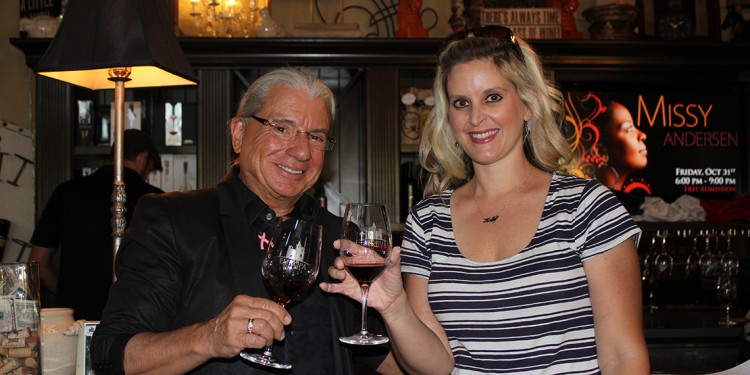
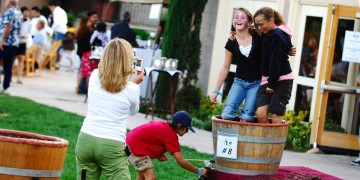
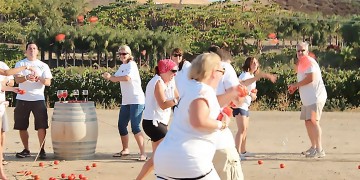
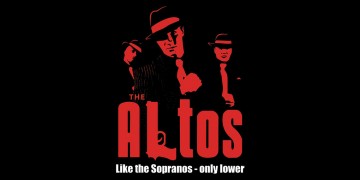


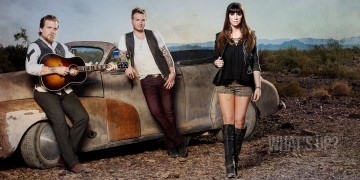
7 Comments
Excellent article! Very informative
Holly is that you?
It’s me, hi Mary! Hope you like the website! 🙂
Yes! Hi Mary! Hope you like the website! 🙂
Hey that’s Dr. Doug! I love that guy!
By switching to Stouts?????
Great article, Holly! What a public service you have provided so many of us who may actually enjoy wine, but don’t know what in the heck we’re supposed to do with it, besides down at least a half a bottle at a time!